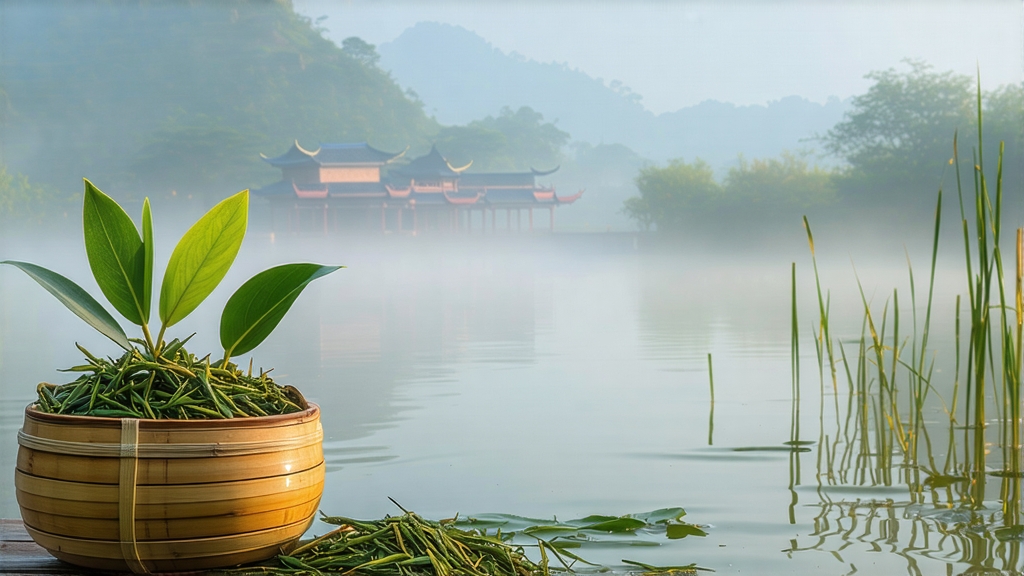
Longjing, literally “Dragon-Well,” is not merely a green tea; it is a liquid manuscript of Chinese history, geography and aesthetics. Its fame first crystallized during the Tang dynasty when the poet-official Lu Yu listed the spring beside Hangzhou’s Lion Peak as one of the nation’s finest water sources for tea. By the late Ming era the imperial court had adopted Lion-Feng Longjing as tribute, and Qing emperor Qianlong is said to have pocketed the bushes on Shi-Feng mountain after his mother’s health improved with every cup. Today the same eighteen mother trees remain under state protection, surrounded by terraces of cloned descendants that stretch like jade combs through the hills west of Hangzhou’s famous lake.
Geography divides Longjing into four legally protected micro-appellations. Shi-Feng, the original imperial plot, sits at 250–350 m on weathered quartz sandstone; its leaves pick up a faint chestnut-sweet note from the mineral-rich soil. Mei-Jia-Wu, a broad valley south-west of the lake, accumulates morning fog that elongates the buds and lends a orchid-like lift. Weng-Jia-Shan, higher and cooler, yields smaller, more concentrated leaf and a brisk, almost citrus snap. Finally Tiger-Run, the lowest and warmest zone, harvests earliest yet retains surprising length because of the constantly percolating spring water. Anything grown outside these four pockets must be labelled “Zhe-Jiang Longjing,” a honest but lesser cousin.
The cultivar itself matters as much as the postcode. The traditional Longjing qunti zhong is a sexually propagated population of old bushes—genetically diverse, slow to sprout, but capable of translating terroir into layered aroma. Since the 1980s the clonal Longjing #43 has dominated because it buds seven to ten days earlier, yields uniformly flat emerald blades and tolerates mechanical harvesting. Purists insist that only qunti can produce the elusive “bean-sweet” aftertaste, yet #43 offers consistency and brightness that modern markets crave. A third cultivar, Zhong-Tea 108, is gaining ground at higher altitudes for its frost resistance and magnolia perfume.
Craft begins in the field. Picking window spans Qingming to Grain-Rain—roughly 20 April—when two leaves and a bud measure exactly 2.5 cm. Experienced pluckers snap the shoot with a subtle twist that breaks the tiny stem yet keeps the pubescent underside intact; this downy layer is what will later refract light into the tea’s famous jade shimmer. Leaves are delivered within two hours to the village workshop, spread 3 cm thick on bamboo trays and withered for four to six hours until they lose about 20 % moisture and the grassy bite subsides.
Pan-firing is Longjing’s signature choreography. A cast-iron wok is pre-heated to 180 °C, brushed with a whisper of fresh tea-seed oil, then cooled to 80 °C before the first leaf charge—150 g, no more. The maker’s bare hand becomes the thermometer: fingers flutter like swallow wings, pressing, stroking, flicking for three to four minutes. This “killing-green” step destroys enzymes that would otherwise brown the leaf, yet must stop short of baking out the tea’s volatile sugars. The temperature is then dropped to 60 °C for the shaping phase: palms press the leaves against the wok’s curved wall in a repeating figure-eight, coaxing the blade into the famous flat spear profile while further reducing moisture to 30 %. A final gentle toasting at 50 °C for twenty minutes sets the aroma and drops water content to below 6 %. Throughout, the master listens for the tell-tale rustle that sounds like silkworms nibbling mulberry—proof that the leaf is dry yet still alive.
Water is the unseen ingredient. Hangzhou’s own Spring of Running Tiger, filtered through quartzite for centuries, carries 45 mg L⁻¹ of total dissolved solids and a pH of 7.2—soft enough to let amino acids sing, yet mineral enough to give backbone. When brewing abroad, aim for 50–80 ppm TDS; avoid distilled water that flattens fragrance and hard water that mutes sweetness. Pre-heat a 250 ml tempered-glass tumbler or a duan-zhou clay cup; both materials retain heat around 80 °C without the metallic ping that stainless steel can impart. Use three grams of leaf—rough